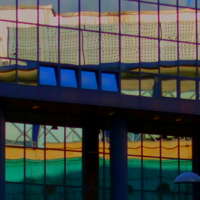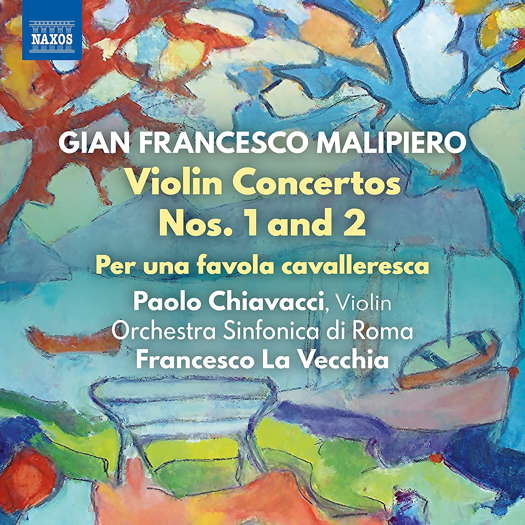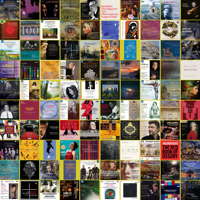 CENTRAL ENGLAND: Mike Wheeler's concert reviews from Nottingham and Derbyshire feature high profile artists on the UK circuit - often quite early on their tours.
CENTRAL ENGLAND: Mike Wheeler's concert reviews from Nottingham and Derbyshire feature high profile artists on the UK circuit - often quite early on their tours.

Double Affection
GIUSEPPE PENNISI listens to Malipiero
'... played impassionately ...'
This CD, released now by Naxos but recorded a few years ago in the Auditorium Concilazione, Rome, provokes in me a feeling of double affection: one for the composer of the music, Gian Francesco Malipiero; and one for the ensemble, the Orchestra Sinfonica di Roma.
Gian Francesco Malipiero is, no doubt, one of the most important and most innovative European musician of the nineteenth century, but now his music is performed only in a limited number of countries. Born in Venice into an aristocratic family, the grandson of the opera composer Francesco Malipiero, Gian Francesco Malipiero was prevented by family troubles from pursuing his musical education in a consistent manner. His father separated from his mother in 1893 and took Gian Francesco to Trieste, Berlin and eventually to Vienna. The young Malipiero and his father broke up their relationship bitterly, and in 1899 Malipiero returned to his mother's home in Venice, where he entered the Venice Liceo Musicale(now the Conservatorio Benedetto Marcello di Venezia). This complex education gave him the opportunity to learn from several schools of innovation and to blend them into a very special style. Malipiero was strongly critical of standard thematic development in composition. He declared:
As a matter of fact, I rejected the easy game of thematic development because I was fed up with it and it bored me to death. Once one finds a theme, turns it around, dismembers it and blows it up, it is not very difficult to assemble the first movement of a symphony (or a sonata) that will be amusing for amateurs and also satisfy the lack of sensitivity of the knowledgeable.
Malipiero's musical language is characterized by an extreme formal freedom; he always renounced the academic discipline of variation, preferring the more anarchic expression of songs, and he avoided falling into program music descriptivism. Until the first half of the 1950s, Malipiero remained tied to diatonism, maintaining a connection with the pre-nineteenth-century Italian instrumental music and Gregorian chant, moving then slowly to increasingly eerie and tense territories that put him closer to total chromaticism. He did not abandon his previous style but he reinvented it. In his latest pages, it is possible to recognize suggestions from his pupils Luigi Nono and Bruno Maderna. His compositions are based on free, non-thematic passages as much as in thematic composition, and seldom do movements end in the keys in which they started. He composed nineteen operas and a very large number of orchestral music.
As Ernest Ansermet once declared, 'his symphonies are not thematic but "motivic": that is to say Malipiero uses melodic motifs like everyone else [...] they generate other motifs, they reappear, but they do not carry the musical discourse - they are, rather, carried by it'. Pierre Boulez said that Malipiero's Le Sette Canzoni (second act of the opera Orfeide) is the only composition at the level of very well-known and often performed with Arnold Schoenberg's Pierrot Lunaire. Yet I had very many difficulties in finding and purchasing a good CD of Le Sette Canzoni.
This CD includes the two violin concertos as well the tone poem Per una favola cavalleresca. This is the first recording of Per una favola cavalleresca and I do hope that it will have excellent sales and many listeners.
Another feature is the performance by the Orchestra Sinfonica di Roma, conducted by Francesco La Vecchia and with Paolo Cavacci as violin soloist. The Orchestra Sinfonica di Roma has been, for some ten years, a unique experiment in Italy (and one of the very few in Europe) of a completely private fully fledged symphony orchestra, financed by a Bank/Loan & Saving Association. The Orchestra Sinfonica di Roma had a season – November-June – with a concert on Sunday afternoon (repeated Monday night) in the Auditorium Conciliazione, a large concert hall near the Vatican where for forty years the symphony orchestra of the National Academy of Santa Cecilia had been playing. Prices were kept low. Every year, the Orchestra Sinfonica di Roma made an international tour. I joined them on their tours of Austria, Germany and Poland. My reviews can be found in Music and Vision, the predecessor of this magazine.
The Orchestra Sinfonica di Roma, mostly made up by young instrumentalists, grew as a very good symphony orchestra. So much that it was invited by the Head of State to perform one of the annual concerts for the end of the year at the Quirinale Palace: a concert for guests only - the Government, ambassadors to Rome and several authorities. Regretfully, when the orchestra was taking off, the Bank/Loan & Savings Association pulled out its five million euro annual subsidy and the orchestra had to close since it could not survive only on ticket sales and listeners' donations.
Let us start with the second piece of the CD, Per una favola cavalleresca (For a Chivalric Tale), the only purely orchestral work on the CD, as well as the longest (at twenty-seven minutes). It dates from 1914-15. It was most likely revised around 1920 to make it into a fully fledge opera - Lancellotto del Lago - never published nor staged during Malipiero's life time, but found, in his papers, three years after his death. Per una favola cavalleresca belongs to a very special musical world mingling late Romantic echoes from Germany (and even Russia) with the influence by French impressionists like Claude Debussy and Maurice Ravel. It is a tone poem without narration, even though it is the basis for a fully fledged opera. The first movement is an introduction to a fantastical world (that of King Arthur and his Court).
Listen — Malipiero: I (Per una favola cavalleresca)
(8.573075 track 4, 0:01-0:58) ℗ 2022 Naxos Rights (Europe) Ltd :
The second movement is a dreamy interlude of love affairs. The third movement is a joyful remembrance of youth and of growing up. The fourth and final movement summarizes the tragic ending of the would-be opera.
Listen — Malipiero: I (Per una favola cavalleresca)
(8.573075 track 7, 1:39-2:21) ℗ 2022 Naxos Rights (Europe) Ltd :
There are thirty years between the Violin Concerto No 1 (1932) and Violin Concerto No 2 (1963). The style is, of course, different. In the first concerto, there is the spirit of post-World War I atonality.
Listen — Malipiero: Lento, ma non troppo (Violin Concerto No 1)
(8.573075 track 2, 2:02-2:57) ℗ 2022 Naxos Rights (Europe) Ltd :
As Malipiero himself said, the second concerto 'just emerged unproblematically'. The slow music is at first played impassionately by the orchestral violins, violas and cellos, which poignantly quieten when the soloist joins them.
Listen — Malipiero: Non troppo lento (Violin Concerto No 2)
(8.573075 track 9, 6:34-7:25) ℗ 2022 Naxos Rights (Europe) Ltd :
Thus, this is an important CD to get to know one of the major twentieth century composers and a promising orchestra that now we can listen to only on recordings.
Copyright © 24 August 2022
Giuseppe Pennisi,
Rome, Italy

CD INFORMATION - MALIPIERO: VIOLIN CONCERTOS 1 AND 2



